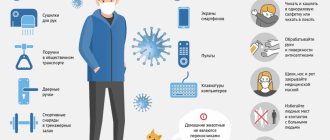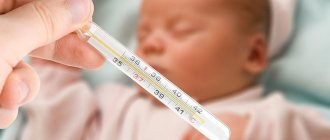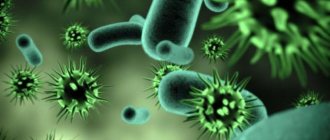The standard body temperature, considered normal, is 36 point 6 degrees. At the same time, the concept of normal, as doctors often note, can be subjective. For example, a reading of 37 degrees is also called normal. In any case, with such indicators, a person feels good, he is comfortable.
Temperature is an important indicator of a person’s condition. As a rule, when they talk about this parameter, they mean increasing it. In such a situation, everyone understands that some pathological process is developing in the body and the body is fighting it. The condition of increased temperature is called hyperthermia, and there are many different drugs to correct it.
But few people consider the mirror situation, when the temperature drops below the limit values. Naturally, many do not fully understand when to sound the alarm. Cardiologist, therapist, endocrinologist Tatyana Romanenko told AiF.ru about what such a condition is and when specialist help is needed .
Degree of danger. What does elevated body temperature indicate? More details
Types of body temperature
The human body temperature changes under the influence of external and internal factors . Death occurs in situations where the body loses the physiological ability to cool or warm tissues.
There are the following types of human body temperature:
- reduced - less than 35 degrees Celsius;
- normal - temperature ranges from 35 to 37 degrees;
- subfebrile - body temperature remains in the range of 37 to 38 degrees;
- febrile - elevated temperature with fever from 38 to 39 degrees;
- pyretic - expressed in the serious condition of the patient, as well as temperature indicators from 39 to 41 degrees;
- hyperpyretic - there is a real threat to a person’s life, since in this case his body temperature exceeds 41 degrees.
Each type of temperature has a direct impact on the functions of internal organs, metabolic processes and the general well-being of a person. An increase in the body's heat metabolism requires taking medications with antipyretic properties.
For patients with critically low body temperature, emergency resuscitation measures are carried out aimed at stabilizing the functions of internal organs, as well as warming the body.
Normal indicators
You may be interested in: At what pressure is sick leave issued: maximum permissible values, duration of sick leave
The human body is able to function fully only within a small temperature range. Its normal indicators largely vary from person to person. They depend on the characteristics of the body, external conditions, and time of day. On average, indicators from +36.0 to +37.1 degrees are considered normal. If the thermometer column deviates more or less from these numbers, then this usually indicates trouble in the body.
However, there are also indicators at which irreversible and incompatible changes with life occur in the body. A person's deadly body temperature can be either below normal (hypothermia) or significantly higher (hyperthermia). In the first case, the death of the organism occurs due to general hypothermia. With hyperthermia, death is caused either by the disease itself, which causes the temperature to rise, or by exposure to external factors.
Normal body temperature in humans by age
The table below shows normal body temperatures for people of different age groups:
| Person's age | Normal body temperature (indicator °C) |
| Newborn baby | 36,8 |
| Baby 6 months | 37,4 |
| Child aged 1 year | 37,4 |
| Children 3 years old | 37,4 |
| Child 6 years old | 37,0 |
| Men, women up to 65 years old | 36,8 |
| People over 65 years old | 36,3 |
These temperature indicators are normal for the armpit area. During the examination of a person, not only his age is taken into account, but also the possible presence of concomitant diseases, individual characteristics of the body, and type of professional activity.
The importance of hyperthermia for the body
The development of hyperthermia is a protective mechanism. A pathogenic pathogen, penetrating the body, causes the production of pyrogen substances responsible for raising the temperature. These, in turn, act on thermoregulation centers in the hypothalamus, ensuring the development of hyperthermia. When body temperature rises to 39 degrees, the production of interferon and leukocytes increases. At such temperatures, the death or slowdown of the vital processes of many infectious pathogens begins.
However, even taking these factors into account, not every development of hyperthermia can be beneficial for the body.
According to their indicators, the temperature is divided into elevated (up to 39 degrees) and high, exceeding 39 degrees. Hyperpyretic temperature is also distinguished, characterized by indicators above 41 degrees.
Moreover, if increasing it to 39.5 can only be beneficial for the body, activating its defenses, then hyperpyretic temperature in itself is dangerous. At 42.5 degrees, an irreversible process of metabolic disorders develops in brain cells; at 45 degrees, the process of denaturation of protein in cells of the whole body begins.
Body temperature that is fatal to humans
The lethal temperature for a person can be too high or very low . In both cases, metabolic processes are disrupted and the functionality of internal organs is reduced or completely lost.
In conditions of severe hypothermia of the body, biological death occurs if the temperature drops below 28°. In this situation, numbness occurs in all tissues involved in the implementation of the functions of the musculoskeletal system. Then the heart and breathing completely stop.
Overheating is no less dangerous for the body, as it can lead to death. Under conditions of hyperthermia, a pathological spasm of blood vessels occurs, which is fraught with disruption of general circulation and cardiac arrest. Death can occur if a person's body temperature is above 41°.
The degree of lethality is influenced not only by the factor of disturbance of the body's heat metabolism, but also by the main reasons that provoked the fever and febrile state of a person. Age and the level of functional activity of the heart, kidneys, and blood vessels are of great importance.
First aid
Medicine knows of cases where it was possible to save people in a state of clinical death. First aid after identifying a person showing signs of overheating or hypothermia is key. The person must be under the control of others until the emergency medical team arrives.
It is not possible to completely cope with the patient’s condition without qualified medical care; the risk of complications and death is high.
When overheated
Algorithm of actions in case of overheating:
- Place the patient in a cool and ventilated area.
- Remove clothing.
- Pour cool water over it.
- Apply a cold compress to your forehead.
- Ensure that you drink plenty of water (it should not be cold or hot, room temperature is optimal, which will allow the liquid to be better absorbed in the body).
When cooling
Algorithm of actions in case of hypothermia:
- Place the person in a warm room.
- Remove clothing.
- Rub your body with woolen gloves; if not, a hat, socks or terry towel will do.
- Wear warm gloves on your hands and wool socks on your feet.
- Cover tightly with a warm blanket.
- Give hot tea with sugar.
Hypothermia and overheating, when reaching critical body temperature levels, can lead to death or the development of irreversible consequences, including loss of ability to work. How favorable the outcome will be depends on the timeliness of assistance.
Causes and signs of hypothermia
A fatal temperature for a person causes the failure of all life support systems of the body . The process can be gradual or instantaneous. It all depends on what external factors affect the body. The main cause of hypothermia is severe hypothermia.
Violation of heat exchange in the direction of decreasing temperature indicators can be caused by the following factors:
- falling into cold water;
- prolonged exposure to frost;
- exposure to chemicals whose properties are associated with the implementation of the freezing effect (for example, liquid nitrogen);
- prolonged hypothermia of the body in damp and cold weather, when the body is not properly protected by warm clothing.
In cold conditions, the human body begins to give off a large amount of energy. Heat loss occurs through the skin and respiratory organs. Exposure to gusty winds accelerates the development of hypothermia.
The first signs of a decrease in body temperature are the appearance of a feeling of trembling and spasm of blood vessels. In this situation, the body signals that it is urgent to take measures aimed at warming the body. Otherwise, there will be a further increase in symptoms of hyperthermia.
The symptom of hypothermia in the form of trembling is a protective mechanism of the body. During trembling, involuntary contraction of muscle tissue occurs, which begins to produce additional amounts of thermal energy. Vasospasm makes it possible to slow down the flow of blood that goes towards the skin, lower and upper extremities.
This symptom of hypothermia is also another heat-saving mechanism. As body temperature further decreases, the effect of slowing down the functioning of the respiratory system and heart muscle develops. The main consumption of thermal energy is directed to maintaining full functions of the brain.
The following basic symptoms are identified that indicate the occurrence of hypothermia:
- trembling of the whole body;
- confusion of thoughts and unclear consciousness;
- slurred speech;
- problems with coordination of movements (first of all, the work of the upper extremities is disrupted);
- severe fatigue and feeling of exhaustion;
- drowsiness;
- memory losses.
An outward sign of hypothermia may be skin that is too red or pale. The human body becomes very cold. A drop in temperature to critical levels can cause symptoms of tissue rigor.
What does the deceased look like?
In case of death from overheating, the signs are not specific; the cause can only be reliably determined based on the results of the autopsy. The exception is when the high temperature was caused by overheating as a result of being close to the flame of a fire. Then you can detect external signs of burns and damage to the skin, but in such situations a person dies mainly from burns, painful shock and carbon dioxide poisoning.
When overheating as a result of hyperthermia, heatstroke or sunstroke, signs of death are not visually diagnosed, since redness of the skin, sweating and other symptoms disappear due to rigor mortis. At the moment of death, a person assumes a boxer's pose (arms and legs are bent) , but after the end of life, the muscles relax and the body position becomes free.
What does someone who died from hypothermia look like:
- pale skin, cyanosis;
- body position is bent, arms and legs are pressed to the anterior abdominal wall;
- when hypothermia occurs outside during the cold season, areas of frostbite are visualized;
- There are pale pink cadaveric spots on the body.
Mechanism of development of hypothermia
The table below shows the main mechanism and stages of development of hyperthermia, which are characterized by the manifestation of certain signs of hypothermia:
| Severity of hypothermia | Body temperature indicator | The mechanism of development of critical hypothermia of the body and the corresponding symptoms of its manifestation |
| Lightweight | The human body temperature ranges from 32 to 35°. | At this stage of the onset of hypothermia, severe trembling of the hands appears, which gradually spreads to all other parts of the musculoskeletal system. Signs of goose bumps appear. Then the epithelial tissues acquire a bluish tint, which indicates a pronounced spasm of blood vessels and a slowdown in general blood circulation. After this, memory problems arise and symptoms of confusion appear. The person's speech becomes unintelligible. |
| Moderate | The human body temperature ranges from 28° to 32°. | At this stage, the mechanism of development of hypothermia is accompanied by the appearance of drowsiness and visual hallucinations. Such signs of a pathological condition indicate that the body has turned on a thermal energy saving mode even for brain tissue. A person experiences the effect of shaking feet, which prevents full movement of the lower extremities. |
| Strong | Body temperature readings are below 28°. | At this stage of hypothermia, the mechanism for the development of hyperthermia is expressed in the complete stop of heartbeat and breathing. Biological death occurs. |
Stages of development of a fatal body temperature for a person
A case was recorded when a person with signs of hypothermia, whose body temperature was 16°, was able to survive. Currently, this indicator is a record for preserving the functions of internal organs in conditions of critical hypothermia of their tissues.
Danger of hyperthermia
With hyperthermia, a person's blood circulation sharply worsens. As a result, the organs become overfilled with blood, which leads to disruption of their function. The body, under conditions of overheating, produces excessive amounts of enzymes and hormones that have a toxic effect on the myocardium. As a result, the patient dies from cardiac arrest.
The lethal body temperature for humans is from +42 to +43 degrees. However, the patient can die even with lower thermometer readings. Indeed, with hyperthermia, several dangerous factors act on the body at once. High temperature leads to intoxication with metabolic products, disturbances in water-salt balance and dysfunction of many organs. Such a negative complex effect becomes the cause of death.
Causes and symptoms of hyperthermia
A lethal temperature for humans causes disturbances in the functioning of the heart and blood vessels. Hyperthermia occurs due to maximum overstrain of the physiological mechanisms of the human body, which are involved in the process of thermoregulation.
If factors that contribute to an increase in body temperature are not eliminated, this leads to the development of heat stroke. This condition is very dangerous for people who have acquired diseases of the cardiovascular system.
There are symptoms of hyperthermia, indicating that a person needs to reduce body temperature:
- increased sweating;
- disturbance of the body's heat metabolism towards a progressive increase in temperature;
- change in the color tone of the skin, which can acquire a bright red, burgundy or bluish tint depending on the condition of the blood vessels and heart of a person;
- violation of local and general blood circulation;
- oxygen starvation of the brain;
- dehydration of the body;
- loss of mineral salts;
- imbalance of electrolytes, the level of which decreases in proportion to the process of dehydration;
- cardiopalmus;
- increased stimulation of the nervous system;
- spasms of the lower extremities and the whole body;
- physical weakness;
- confusion;
- feeling of heat;
- visual and auditory hallucinations;
- loss of consciousness.
Timely measures taken to cool the body can limit mild symptoms of hyperthermia in the form of increased sweating, a feeling of heat, rapid heartbeat and physical weakness.
Heatstroke
Heatstroke is a consequence of overheating of the entire body.
This type of pathological condition of the body occurs in the following cases:
- the person is in hot weather or inside a stuffy room where dry and hot air predominates;
- the body has been exposed to solar radiation for a long period of time;
- Almost all areas of the skin are covered with warm clothing in dark shades when it is too hot outside or indoors.
Heatstroke has typical symptoms of hyperthermia. In this case, the appearance of additional symptoms in the form of nausea, vomiting, the appearance of dark circles and spots before the eyes cannot be ruled out.
After a person’s body temperature reaches 42°, the physiological processes of protein bond breakdown begin, which leads to inevitable death. The largest number of deaths caused by heatstroke are recorded annually in Russia, Japan, and Canada.
Sunstroke
The condition of hyperthermia caused by sunstroke, in its symptoms, resembles thermal overheating of the body. In this situation, brain function is impaired, which affects the performance of all internal organs and the musculoskeletal system.
At risk are people who stay in direct sunlight for a long time and do not wear hats during the hot season. The consequences of sunstroke are intensified if the environment is dominated by too humid air and there is no wind. This cause of hyperthermia can cause coma or death.
Diseases
Hyperthermia and a febrile state of the body, which is caused by an infectious or inflammatory disease, are much easier to tolerate than heat and sunstroke. In this situation, an increase in body temperature is not a disruption in the functioning of thermoregulatory mechanisms, but a protective reaction of the body in response to the invasion of pathogenic microbes.
In hot conditions, the process of cell division of infectious agents slows down significantly or completely stops, and then their complete death occurs. Hyperthermia caused by the inflammatory process is much less likely to lead to death.
Temperature standards
Normal body temperature indicators have minor physiological daily fluctuations. This is due to the fact that in the process of life there are certain biorhythms. Intense physical activity, psycho-emotional stress, taking certain medications, and much more can temporarily affect the temperature.
When critical levels are reached, a person’s life is threatened, so it is necessary to monitor it and take timely measures to stabilize it.
Table: Indicators of normal body temperature depending on the measurement area and time of day:
| Measuring area | Measurement Features | Average value, (оС) | Morning, (оС) 500-700 | Evening, (оС) 1900-2100 |
| Axillary | It is traditional and most common. Measurements are taken with a mercury and electronic thermometer in the armpit. The skin in this area should be clean and dry. | 36,6 | 35,6 – 36,2 | 36,9 – 37,2 |
| Inguinal | Thermometry is performed vaginally or anally. Used in pregnant women and women planning pregnancy, children, the elderly, and in cases of suspected cancer. | 37,9 | 37,7 | 38,3 |
| Oral cavity | It is the most reliable way to determine body temperature. The measurement is carried out in the sublingual area; before this, the consumption of hot and cold foods should be avoided. | 37,3 | 37,1 | 37,7 |
For measurements I use mercury, electronic and infrared thermometers. There are special forms for infants, in the form of a pacifier, and non-contact ones, which determine the indicator on the skin. In the latter case, the measurement is carried out on the skin of the forehead; it is equal to the value in the armpit.
Development of hyperthermia
The development of hyperthermia occurs with simultaneous exposure to high environmental temperatures and factors that contribute to dysfunction of thermoregulatory mechanisms. For example, critical overheating of the body occurs in people performing heavy physical work in direct sunlight.
At the same time, labor activity is carried out in the summer, in hot and windless weather. The influence of an external source of thermal energy is aggravated by the active contraction of muscle tissue, which also helps to warm the body.
Violation of the body's thermal regulation with the further development of hyperthermia can occur in men and women who are intoxicated.
Causes of high temperature
Reasons that cause high fever include:
- viral and bacterial infections (ARVI, influenza, tonsillitis, measles, rubella, mumps, chicken pox, mononucleosis, bronchitis, pneumonia, tuberculosis, COVID-19, epiglottitis, gastroenteritis, acute otitis media, acute external otitis, acute rhinosinusitis, urinary infections pathways, hepatitis, meningitis, encephalitis and many others);
- overheating (heatstroke);
- medications (some antibiotics, antihypertensives, anticonvulsants);
- autoimmune and inflammatory diseases (rheumatoid arthritis, systemic lupus erythematosus, ulcerative colitis, Crohn's disease);
- oncological diseases (Hodgkin's lymphoma, non-Hodgkin's lymphoma, leukemia);
- appendicitis;
- abscess;
- thrombophlebitis;
- reaction to the introduction of vaccines;
- high physical or emotional stress.
In some cases, the cause of the high temperature cannot be determined. If the fever persists for more than 3 weeks, and diagnostic tests do not clarify the picture, a diagnosis of fever of unknown origin is made.
A special symptom rating scale from the American Academy of Family Physicians will help determine the possible causes of a high temperature (while you are waiting for medical help).
First aid
A lethal temperature for humans causes respiratory arrest and disrupts the functions of the central nervous system. To minimize the risk of death caused by hypothermia or critical overheating of the body, the victim must be provided with timely medical assistance.
The procedure aimed at stabilizing the functions of internal organs depends on the general condition of the person, the causal factors that provoked a violation of the thermal regime of the body.
At low temperature
People with signs of hypothermia require urgent hospitalization in a therapeutic department.
Before the ambulance arrives, it is necessary to perform actions aimed at warming the victim’s body:
- A person who has critical hypothermia should be moved to a room with warm air or any other shelter that protects from the effects of frost and cold wind.
- It is necessary to remove wet clothes from the surface of the victim’s body, and then cover him with a blanket or warm clothes, which will speed up the process of restoring normal temperature.
The main emphasis of all actions aimed at warming a person with signs of hypothermia is on insulating the neck, head, groin area and chest. These are the parts of the body through which the greatest amount of thermal energy is lost.
A person who is in clear consciousness must be given warm drinks. In such a situation, it is recommended to brew black tea or make a decoction of chamomile or thyme. To increase the functional activity of the tissues of the heart and brain, warm tea should be consumed together with honey, or 3-4 tablespoons of sugar should be added to the drink.
After the person is completely warmed up, it is necessary to inspect his body for possible damage and signs of frostbite.
The last consequence of hypothermia is a fairly common phenomenon, since as hypothermia of the body worsens, local blood circulation slows down in the tissues of the lower and upper extremities. Upon arrival of ambulance doctors, the victim is hospitalized in the hospital.
If a person is in an unconscious state, characterized by confusion, the presence of delusional ideas, then you should not attempt to warm him up with hot drinks.
At high temperature
First aid to a person who has signs of a critical increase in body temperature should be provided as quickly as possible . Otherwise, there is a real risk of disruption of the heart, blood vessels and brain.
The person who provides first aid must follow the following algorithm of actions:
- Call an ambulance, reporting exactly what symptoms of hyperthermia the patient has.
- Move the person to a cool room. If there are no buildings nearby, then you need to find a shaded place where there is no direct sunlight.
- The patient should be placed in a horizontal position, and a pillow or bolster made from personal belongings should be placed under his head.
- Then you should moisten a handkerchief or any other piece of clean cloth in cold water.
- Before the arrival of doctors, it is necessary to wipe the patient’s face, back of the head, neck and décolleté to speed up the process of cooling the body, as well as prevent a further increase in temperature.
- If possible, it is recommended to remove unnecessary items from the patient that help warm the body.
- The organs of the respiratory system must be provided with a flow of fresh air, as this will avoid disruption of metabolic processes in brain cells.
- You need to collect 200-300 g of ice in a plastic bag and then apply it to the back of the patient’s head.
The best therapeutic effect aimed at cooling the human body with signs of hyperthermia is achieved by dousing it with water at a temperature of 18° to 20°. To do this, the patient must be placed in the bathroom, giving him a cool shower.
When should you see a doctor if you have a high fever?
A rise in temperature is not always a cause for great concern. If the temperature does not exceed 38 ℃, you need to drink plenty of fluids, get plenty of rest, regularly ventilate the room, use a humidifier, you can take a warm bath (cool water, cold rubdowns, rubdowns with alcohol can aggravate the situation and provoke a further increase in temperature).
If the temperature has exceeded 38 ℃, you can take an antipyretic: paracetamol, ibuprofen or aspirin.
Warning: Do not give aspirin to children, due to the risk of developing a rare but potentially fatal condition called Reye's syndrome, do not give paracetamol to a child under 2 months of age, or ibuprofen to a child under 3 months of age. Follow the dosage recommendations prescribed in the drug instructions. Do not alternate antipyretic medications.
You should immediately consult a doctor or seek emergency medical help in the following cases:
- temperature above 38 ℃ in a child under 3 months;
- temperature up to 38.9 ℃ in a child aged 3–6 months, accompanied by symptoms such as fussiness, repeated vomiting, prolonged diarrhea, severe headache, abdominal pain, incessant crying;
- temperature up to 38.9 ℃ in a child over 6 months of age, which does not subside within 24 hours, there are no accompanying symptoms or there are symptoms of a cold, diarrhea, stiff neck, increased photosensitivity, severe headache, nausea and vomiting;
- the child’s high temperature persists for more than 3 days;
- the child does not respond to the parent’s address to him, does not concentrate, refuses to drink, the parents are unable to stir him up or wake him up;
- the child has a skin rash, purple spots that look like bruises;
- an adult's temperature exceeds 39.5 ℃, does not decrease after taking an antipyretic drug, is accompanied by symptoms such as severe headache, skin rashes, severe sensitivity to bright light, stiff neck muscles and pain when bending the head forward, confusion, lethargy, persistent vomiting, dehydration, chest pain, difficulty breathing, severe abdominal pain, pain when urinating, cramps;
- an adult’s temperature exceeding 40.5 ℃ is a reason to seek urgent medical help;
- high fever in a child or adult with a weakened immune system (due to long-term steroid therapy, bone marrow or organ transplantation, removal of the spleen, cancer, HIV/AIDS).
What not to do at high and low body temperatures in humans
When providing first aid to people with signs of hypothermia or overheating of the body, it is strictly forbidden to perform the following actions:
- rub the arms, legs and other parts of the body of a person who has signs of critical hypothermia (these actions will lead to damage to the smallest blood vessels that are in a spasmodic state);
- speed up the warming process with the help of alcoholic drinks;
- place a patient with signs of hypothermia in a hot bath (the process of warming the body should occur gradually);
- place a person who has hyperthermia, accompanied by nausea and periodic vomiting, on his back (a patient with these signs must be placed on his side so that the contents of his stomach do not enter the trachea);
- place the patient under an air conditioner with a very cold air flow;
- assist a person with hyperthermia by exposing them to direct sunlight.
Human temperature is one of the physiological markers of the functional state of the body.
The change in this indicator is influenced by the environmental microclimate conditions, the age of the individual, the performance of internal organs, as well as the presence of concomitant diseases. Normal body temperature ranges from 36° to 37° . A decrease or increase in these indicators causes a gradual disruption of metabolic processes in the body, the work of the heart and respiratory organs slows down, and the walls of blood vessels contract.
For a person to die, it is enough that his body temperature drops below 28°, or rises to a maximum of 42°. In the latter case, denaturation of protein compounds occurs.
Heatstroke
However, in medical practice, a negligible number of cases of temperature rises to 42 degrees as a result of any disease have been described. Usually, doctors encounter a fatal temperature for a person only as a result of heat or sunstroke. This situation may occur when working in a hot shop or performing vigorous physical activity in direct sunlight and high humidity. Under these circumstances, it is difficult for the body to transfer heat, which is manifested by the development of hyperthermia. The literature describes a case of a surviving patient whose temperature increased to 45 degrees as a result of overheating.
Symptoms of hypothermia
Lethal body temperature can be caused not only by high numbers, but also by critically low ones. Hypothermia below 36 degrees is considered low; temperatures below 35 degrees are considered low. When the temperature drops below 34 degrees, the following symptoms may occur:
- difficulty moving;
- trembling throughout the body;
- slurred speech;
- hallucinations;
- loss of consciousness;
- weak pulse;
- drop in blood pressure.
The development of hypothermia below 32 degrees can lead to irreversible changes in the body and even death.










